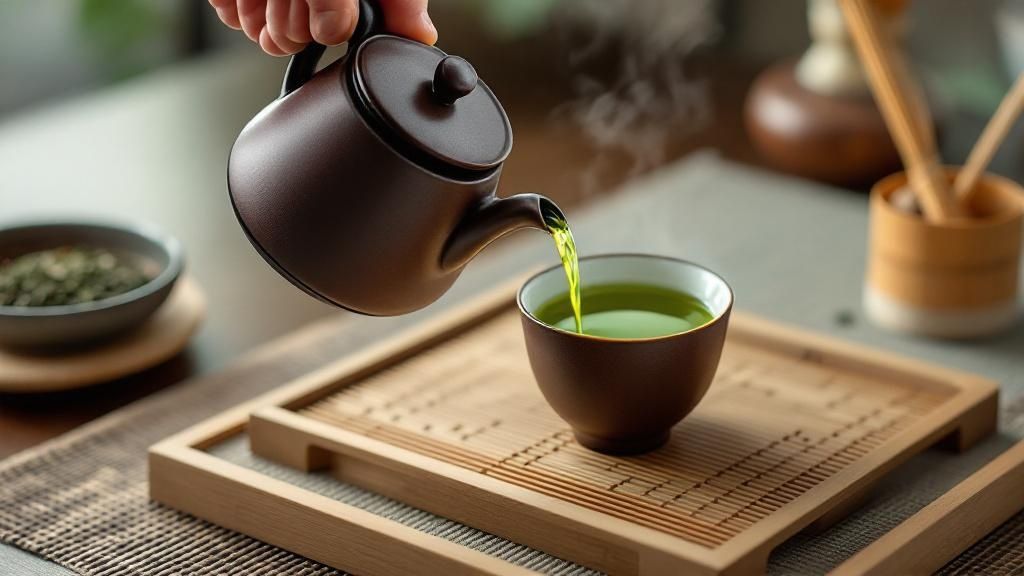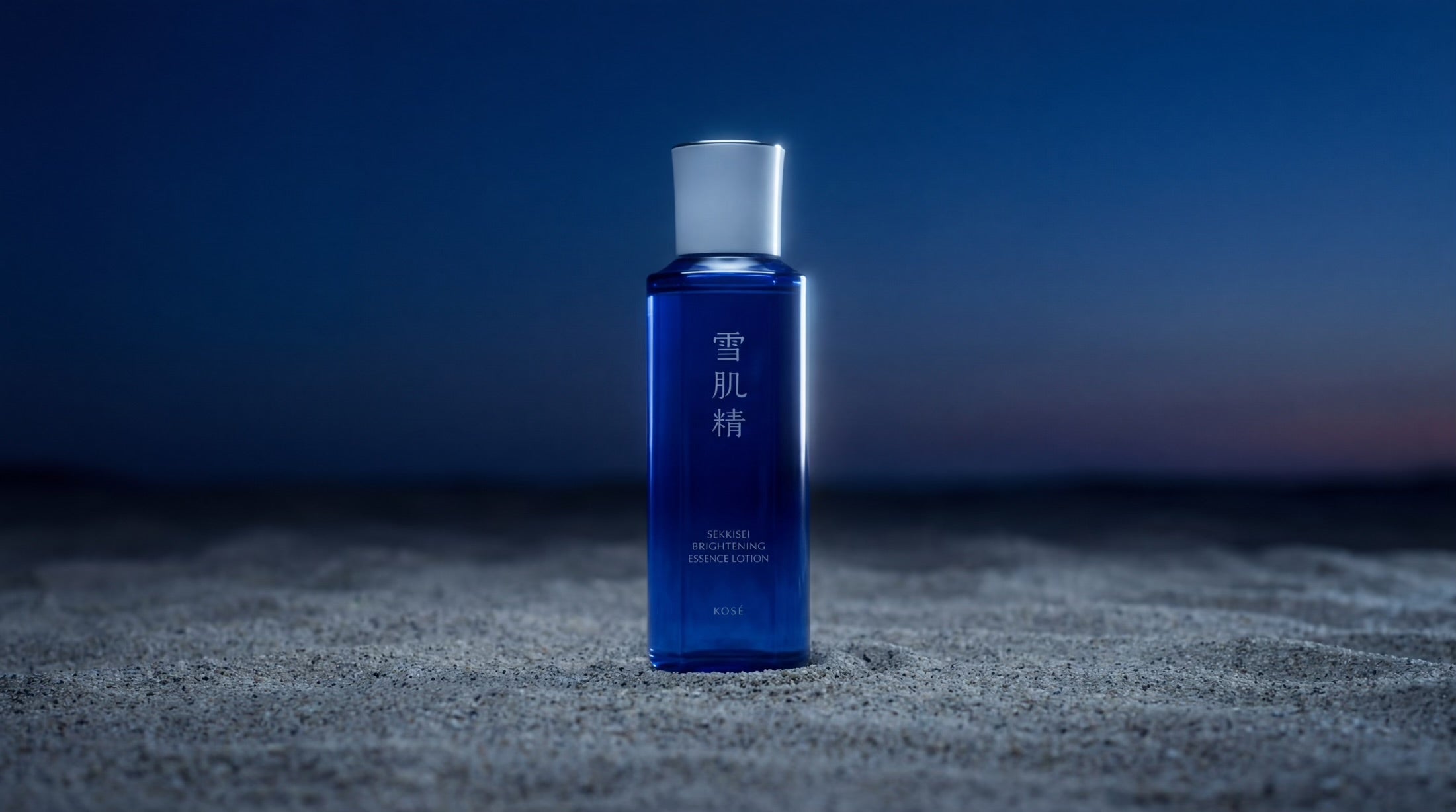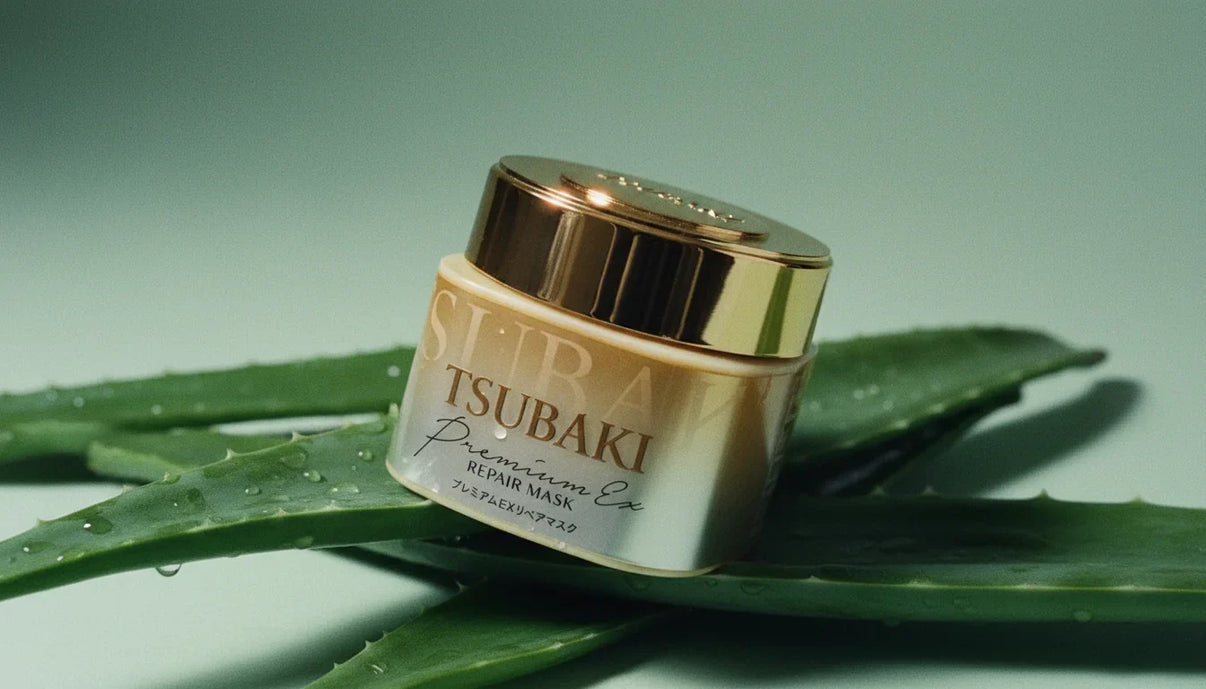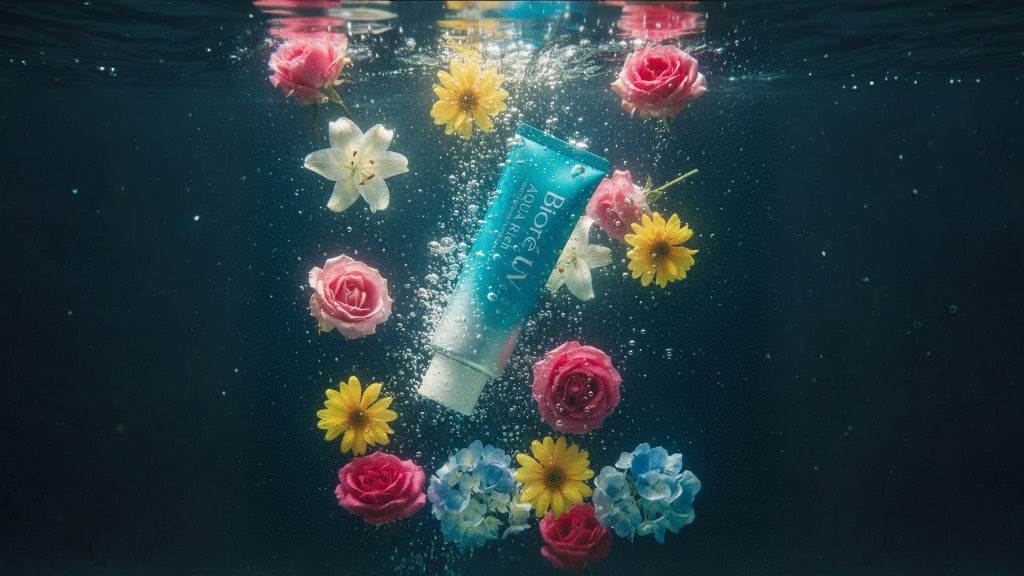Getting your Japanese green tea to taste just right is much easier than you might think. It all boils down to two simple secrets: using cooler water than you would for other teas and keeping an eye on a shorter steeping time. Nail these two, and you’ll be rewarded with that incredible sweet, savory flavor that makes Japanese tea so special, instead of a cup full of bitterness.
The Art of Japanese Tea Brewing
Brewing Japanese green tea is less about following a strict set of rules and more about embracing a mindful approach. It's an exercise in precision and care. Unlike robust black teas that can take boiling water head-on, Japanese green tea leaves are incredibly delicate. Their most sought-after flavors are fragile and easily scorched by high heat, which is why getting the temperature just right is absolutely critical.
This isn't just a brewing technique; it's a practice steeped in centuries of Japanese tradition. The entire ritual is designed to highlight the tea's signature umami flavor, especially in prized varieties like sencha and gyokuro. To coax out those sweet and savory notes while keeping bitterness at bay, you'll want to keep your water temperature much lower than you're used to, somewhere between 50°C and 80°C (122°F to 176°F).
For a quick reference before we dive in, here’s a handy guide to get you started.
Quick Guide to Japanese Green Tea Brewing
This table offers a snapshot of the ideal brewing parameters for some of the most popular Japanese green teas. Think of it as your cheat sheet for a perfect cup every time.
| Tea Type | Ideal Water Temperature | Steeping Time (First Infusion) |
|---|---|---|
| Gyokuro | 50°C - 60°C (122°F - 140°F) | 60 - 90 seconds |
| Sencha | 70°C - 80°C (158°F - 176°F) | 45 - 60 seconds |
| Hojicha | 80°C - 90°C (176°F - 194°F) | 30 - 45 seconds |
| Genmaicha | 80°C - 85°C (176°F - 185°F) | 45 - 60 seconds |
| Bancha | 80°C - 90°C (176°F - 194°F) | 30 - 60 seconds |
Remember, these are starting points. Feel free to adjust them slightly to match your personal taste as you become more familiar with the tea.
Understanding the Core Principles
Your goal here is to strike a perfect harmony of flavors. You're essentially playing the role of a conductor, managing two key elements in the leaves:
- Umami and Sweetness: These are the good guys. They come from amino acids like L-theanine, which are gently drawn out at lower temperatures.
- Astringency and Bitterness: These are the less welcome guests. They come from catechins, which rush out and dominate the flavor when the water is too hot.
By carefully managing the heat, you have complete control over the final taste in your cup. To get a better sense of the amazing variety of flavors you can unlock, take a look at our guide to Japanese tea types.
The essence of brewing Japanese green tea is control. You are gently encouraging the leaves to release their best qualities while preventing the release of their harsh ones.
The Role of Water Quality
Just as you carefully select your tea leaves, the water you use plays a massive role in the final taste. It's an often-overlooked detail that can make all the difference.
Hard water, which is high in minerals, can dull the tea's delicate notes. On the other hand, heavily treated tap water can introduce a chemical taste you definitely don't want. Your best bet is usually filtered or soft spring water. While it’s about a different brew, you can learn a lot about the importance of water quality for brewing and apply the same principles here. Paying attention to this small detail is what elevates a good cup of tea into a truly great one.
Selecting Your Leaves and Essential Teaware
Your journey to the perfect cup of Japanese green tea starts long before you even think about boiling water. It really begins with the choices you make in selecting your tea leaves and the tools you use to brew them. These initial steps set the entire stage for the final flavor in your cup.
When you're first learning how to brew Japanese green tea, picking the right leaves is easily the most critical decision you'll make.
For a refreshing, everyday brew, you can't go wrong with a quality Sencha. What you're looking for are vibrant, deep green leaves that have been tightly rolled into fine, needle-like shapes. If it has a fresh, almost grassy aroma when you open the package, that's a fantastic sign of its quality.
If you're in the mood for something truly special, however, you might want to try Gyokuro. This is a premium, shade-grown tea. The leaves are covered for about 20 days before harvest, a process that dramatically increases the amino acid content. The result is a tea with an incredible sweetness and a rich, savory umami flavor, often with a unique oceanic aroma.
To get started with some trusted options, this list of the 12 best Japanese tea brands is a great resource for finding an authentic brew.

Gathering Your Essential Tools
Once you have your tea picked out, getting the right equipment will make the whole process smoother and much more rewarding. You don't need a cupboard full of gear, but a few key items are non-negotiable for an authentic experience.
- A Teapot (Kyusu): The traditional Japanese teapot, or kyusu, comes highly recommended for a reason. Its unique side-handle design makes pouring feel incredibly intuitive. More importantly, its wide, flat shape and built-in mesh filter give the delicate leaves plenty of room to unfurl and release all their complex flavors.
- Teacups (Yunomi): Small, handleless ceramic cups, known as yunomi, are the traditional choice. Their size isn't just for aesthetics; it encourages you to savor the tea in small, concentrated sips, appreciating every nuance of the flavor.
- A Way to Heat Water: Any kettle will do the job, but if you can get one with precise temperature control, it's an absolute game-changer for brewing delicate green teas.
Pro Tip: Before you start brewing, always pre-warm your kyusu and yunomi. Just pour some hot water into them, swirl it around, and discard it. This simple habit prevents the cold ceramic from dropping the water temperature, ensuring a consistent and flawless steep every single time.
It’s also worth paying attention to the materials your teaware is made from, especially your kettle. Choosing items from trusted non-toxic cookware brands can make a real difference, ensuring that no unwanted tastes interfere with the clean, delicate profile of your tea. It's a small detail that helps preserve the purity of the final brew.
Mastering Water Temperature Without a Special Kettle

Here's a little secret I've learned over years of brewing: you absolutely don't need a fancy, temperature-controlled kettle for perfect Japanese green tea. While those gadgets are nice to have, true mastery of water temperature is all about technique, not technology. In fact, getting this one skill right is probably the most important step in avoiding bitterness and unlocking those incredible sweet and savory flavors.
The key is a traditional Japanese method called yuzamashi, which literally means "cooling boiled water." It's an elegant and surprisingly effective solution that uses the teaware you likely already own. The idea is simple: every time you pour water from one vessel to another, its temperature drops.
By understanding this principle, you can dial in your brewing temperature with remarkable precision. It gives you complete control over the final taste of your tea.
The Yuzamashi Technique in Action
Let's walk through a real-world scenario. You want to brew a delicate Sencha, which is at its best around 70-80°C (158-176°F). Your kettle just finished boiling water to 100°C (212°F). How do you cool it down without guessing or waiting around?
This is where the magic of the yuzamashi method comes into play.
-
First Pour: Start by pouring the boiled water from your kettle into an empty teacup (or a dedicated cooling pitcher, also called a yuzamashi). This single transfer instantly cools the water by about 10°C (18°F), bringing it down to roughly 90°C.
-
Second Pour: Now, pour the water from that first cup into your empty teapot (kyusu). This second pour drops the temperature another 10°C, landing you right around 80°C—the perfect upper range for a fantastic cup of Sencha.
This simple, two-step pouring process is a reliable way to hit your target brewing temperature every time, no special equipment needed. It also has the added benefit of pre-warming your teaware, which helps maintain a stable temperature during steeping for a more even and flavorful extraction.
Once you get the hang of it, this technique becomes second nature. It’s a small bit of kitchen science that transforms your tea brewing from guesswork into a predictable and rewarding ritual.
The Delicate Dance of Steeping and Pouring

Now that your water is at the perfect temperature, you've reached the most hands-on part of the brewing journey. Steeping Japanese green tea isn't a "set it and forget it" kind of deal—it’s an act of mindfulness and precision. Unlike black teas that can handle a long soak, most Japanese green teas offer up their best flavors in a surprisingly short window.
For a classic Sencha, the first infusion is incredibly brief, often just 45 to 60 seconds. This quick steep is all you need to coax out those sweet, savory umami notes without accidentally pulling out the bitter compounds that can ruin a cup. I highly recommend using a timer; it’s a simple habit that makes a world of difference.
The Art of the Pour
Once your timer goes off, how you pour is just as crucial as the steep itself. This is where you can truly elevate your tea from good to exceptional, and it's a fundamental part of Japanese hospitality.
If you're serving more than one person, you'll want to embrace a technique called mawashisogi. Instead of filling one cup at a time, you pour a little into each cup, then reverse direction and pour a bit more, repeating until every cup is full.
This method ensures everyone gets a cup with the exact same strength and flavor profile. Why bother? Because the tea's character changes as you pour.
The final few drops from the teapot, often called the "golden drop," are the most concentrated and flavorful part of the entire brew. Make sure you gently shake the pot to get every last bit into the cups.
Why This Technique Matters
This level of detail is a hallmark of brewing Japanese green tea properly. It’s this very precision that has helped build its reputation around the world. In fact, the United States is the largest importer of Japanese green tea, driven by a growing demand for premium leaves that require this exact kind of careful brewing to unlock their full potential.
You can see this precision in other teas, too. For instance, matcha is traditionally whisked with water at 70°C for about 16-20 seconds to achieve its signature creamy, smooth taste.
If you’re keen on perfecting a specific tea, you might also find our dedicated guide helpful: Sencha brewing instructions for a perfect cup every time.
Enjoying Multiple Infusions and Advanced Techniques

If you're tossing out your tea leaves after just one steep, you're missing out on one of the greatest pleasures of high-quality Japanese green tea. These exceptional leaves are meant to be enjoyed over multiple infusions, with each brew unveiling a completely different side of its personality. I like to think of it as a conversation; the first cup is the polite introduction, and the next few are where you really get to know each other.
The secret is that you can't treat every infusion the same. The leaves are already hydrated and opened up, so they'll give up their flavor much more quickly on the second and third go-around. You have to adapt your technique.
Generally, you'll want to use slightly hotter water but for a much shorter time. Here’s a good starting point:
- For your second infusion, bump up the water temperature by about 5-10°C from your first brew. The steeping time, however, should be cut dramatically—often to just 15-30 seconds.
- Ready for a third cup? You can increase the heat again and steep for around 45-60 seconds to coax out those last, wonderfully subtle notes.
Following this method helps you pull a beautifully balanced flavor profile from the leaves every time, avoiding the bitterness that comes from over-steeping.
Exploring Advanced Brewing Methods
Once you feel confident with your steeping, a whole new world of Japanese tea opens up. You can start playing with other methods that unlock entirely different flavors from the very same leaves.
A fantastic and surprisingly simple technique to try is mizudashi, or cold brewing. It couldn't be easier: simply put your tea leaves into a pitcher with cold, filtered water and let it steep in the fridge for a few hours.
What you get is a tea that is exceptionally smooth, sweet, and mellow. It has almost no bitterness and is naturally lower in caffeine, making it an incredibly refreshing drink for a warm day. The cold water extracts the sweeter amino acids (like theanine) far more than the astringent catechins.
Pro Tip: Mizudashi is a brilliant method for almost any Japanese green tea, but it truly shines with Sencha and Gyokuro. The slow, cold infusion highlights an incredible sweetness that hot brewing just can't quite capture in the same way.
If you're fascinated by the wellness side of Japanese tea, you might also want to explore the 8 benefits of drinking matcha, another cornerstone of Japan's rich tea culture.
Your Questions on Brewing Japanese Green Tea Answered
Even when you follow the steps perfectly, the art of brewing Japanese green tea can throw you a few curveballs. It's completely normal to hit a few snags along the way, so I've put together this section to tackle those common hurdles head-on.
Think of this as your go-to troubleshooting guide for the real-world issues that might pop up on your journey to the perfect cup. We'll get you brewing with more confidence and a lot less frustration.
Why Does My Green Tea Taste So Bitter?
This is, without a doubt, the most common question I hear. The culprit is almost always one of two things: your water was too hot, or you let the leaves steep for too long. Bitterness comes from catechins, and they're extracted incredibly fast when the water temperature is too high.
For most Sencha, you want to aim for a sweet spot of 70-80°C (158-176°F). If your kettle just boiled, give the water a few minutes to cool down. Or, you can use the yuzamashi pouring technique we talked about earlier. Just as important is your timer—an extra 20 seconds can honestly be the difference between a sweet, mellow brew and a bitter disappointment. I always recommend starting with 60 seconds for the first infusion and then adjusting from there based on your taste.
Can I Use a Regular Tea Infuser Ball?
Technically, yes, but you'll be sacrificing a huge amount of flavor. Those delicate Japanese green tea leaves need plenty of room to unfurl and release their complex, nuanced character.
A small, cramped tea ball just doesn't allow for that essential expansion, which almost always leads to a weak, underdeveloped brew. The traditional kyusu teapot is designed with a wide base and a built-in mesh filter for exactly this reason. If you don't have a kyusu yet, a French press or even a simple, spacious basket infuser is a much better alternative because it lets the leaves float and expand freely.
How Much Tea Leaf Should I Actually Use?
A fantastic starting point for a beautifully balanced cup is one heaping teaspoon (that's about 4-5 grams) of loose-leaf tea for every 180-200 ml (around 6-7 oz) of water. I find this ratio consistently produces a satisfying and flavorful brew.
If you're looking for a richer, more umami-forward experience, especially with premium teas like Gyokuro, don't be afraid to increase the amount of tea leaf just a little. For anyone who loves precision and wants to replicate that perfect cup every single time, using a small digital kitchen scale is a complete game-changer. It takes all the guesswork out of the equation.
Pre-warming your teapot and cups is a tiny step that makes a massive difference. Pouring perfectly heated water into cold ceramic can instantly drop the temperature by 5-10°C, pulling it right out of that ideal brewing range. Just swirl a bit of hot water in your teaware first to ensure a stable temperature for a much more flavorful infusion.
This kind of attention to detail is what makes the world of Japanese tea so special. It's also fascinating to see how these principles of careful preparation and quality ingredients translate to other wellness-focused drinks. You can explore the benefits of drinking matcha for wellness to see another beautiful example of how it all comes together.
At Buy Me Japan, we bring the finest aspects of Japanese quality directly to you. Explore our curated collection of authentic teas, snacks, and beauty products to experience true Japanese craftsmanship. Discover your new favorites at Buy Me Japan today.




Share:
Your Guide to Japanese Cooking Basics at Home
What Is Konnyaku A Guide to This Miracle Food